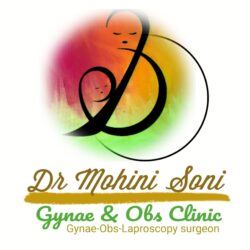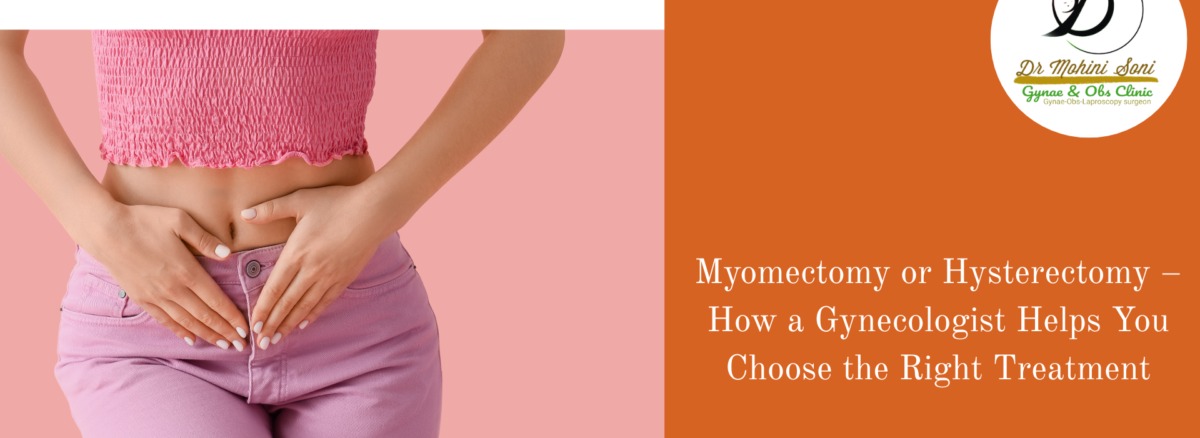For many women, symptoms like heavy bleeding, pelvic pain, or pressure in the lower abdomen are more than just discomfort—they could be signs of uterine fibroids, adenomyosis, or other uterine conditions. When symptoms become severe, treatment options may include myomectomy or hysterectomy.
But how do you know which is the right option for you? That’s where the expertise of a gynecologist becomes essential.
Understanding the Two Treatments
Before making any decision, it’s important to know what each procedure involves:
Myomectomy: Myomectomy is a surgical procedure used to remove fibroids (non-cancerous growths in the uterus), while preserving the uterus itself. It’s often recommended for women who:
- Want to retain fertility
- Have a limited number of fibroids
- Prefer to keep their uterus for personal or cultural reasons
Hysterectomy: Hysterectomy involves the removal of the entire uterus, and sometimes the cervix and ovaries, depending on the condition. It’s a definitive solution for women dealing with:
- Large or multiple fibroids
- Severe menstrual bleeding
- Chronic pelvic pain
- Uterine prolapse or endometrial cancer
How a Gynecologist Helps You Decide
Every woman’s health journey is unique. A qualified gynecologist plays a critical role in guiding this decision through:
In-depth Evaluation: Your doctor will assess your symptoms, review your medical history, perform pelvic exams, and recommend ultrasounds or MRIs to evaluate the condition of your uterus.
Discussion of Fertility Plans: If you wish to have children in the future, myomectomy is often considered the better option. Your gynecologist will discuss your fertility goals and how each procedure could impact them.
Review of Fibroid Characteristics: The size, number, and location of fibroids significantly affect the choice of surgery. A gynecologist helps weigh these factors to select the safest and most effective approach.
Age and Menopausal Status: Women nearing menopause may opt for a hysterectomy, especially if fibroids are large or keep recurring. Younger women usually consider uterus-preserving options first.
Clear Explanation of Risks and Recovery: Both surgeries come with benefits and recovery periods. Your gynecologist ensures you understand the risks, healing time, and long-term effects before making a decision.
Why Timely Consultation Matters
Delaying care can lead to worsening symptoms or complications. Seeing a gynecologist in Vasant Kunj, Delhi, or your local area, ensures early detection and a wider range of treatment options. Whether you’re managing symptoms or planning surgery, a timely consultation can make all the difference.
Conclusion
Choosing between myomectomy and hysterectomy isn’t just about surgery—it’s about your future, your goals, and your comfort. With the right guidance, you can make an informed decision that aligns with your health and life plans.
If you’re struggling with uterine fibroids or other related issues, don’t wait. Book an appointment with an experienced gynecologist in Delhi who can help you explore all your options—with clarity, compassion, and care.
Frequently Asked Questions (FAQs)
- Can I get pregnant after a myomectomy?
Yes, myomectomy preserves the uterus, so many women can conceive naturally after the surgery—depending on the number, size, and location of fibroids removed. - Is hysterectomy a permanent solution for fibroids?
Yes, hysterectomy completely removes the uterus, so fibroids cannot return. It’s considered a permanent solution for women with severe or recurring fibroids. - What is the recovery time for both surgeries?
Myomectomy recovery usually takes 2–4 weeks if done laparoscopically. Hysterectomy may take 4–6 weeks, depending on the surgical method and individual healing response. - Which surgery has fewer long-term effects?
Myomectomy has fewer long-term changes since the uterus is preserved. Hysterectomy results in the loss of menstruation and the inability to conceive, which may be emotional or physical considerations for some women. - How do I know which treatment is best for me?
Your gynecologist will consider your age, symptoms, reproductive goals, fibroid size/location, and overall health before recommending the most suitable option.

